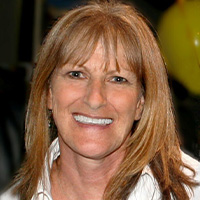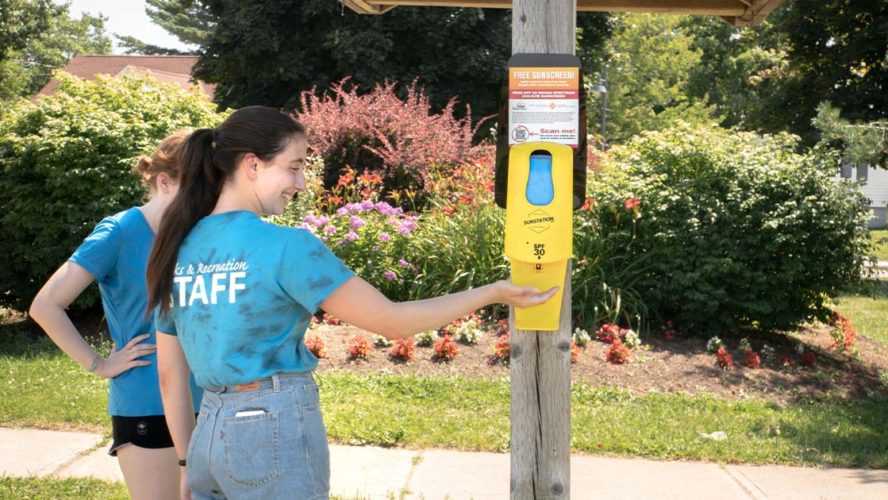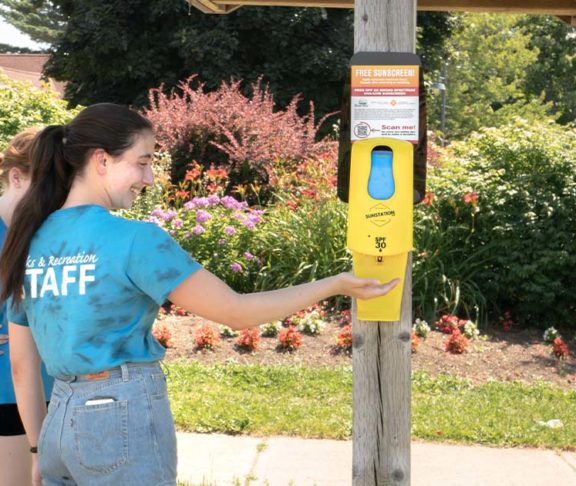
Kathy Barnard
Founder, Save Your Skin Foundation
Save Your Skin Foundation encourages Canadians to pay attention to skin health while providing resources and support to skin cancer patients and advocates for timely, affordable access to treatment.
Kathy Barnard, Founder of Save Your Skin Foundation, knows you’ve heard all the messages about preventing skin cancer a million times. But she wants you to really listen.
“Skin cancer is preventable. We know we should stay out of the sun during peak hours. We know we should lather on sunscreen. But so many of us don’t. My first message is that your skin is the largest organ of your body. You need to protect it,” says Barnard, a British Columbia resident and Founder of Save Your Skin Foundation.
“The second thing is to check your skin and check your loved one’s skin. We all have pictures of ourselves all over our phone. It’s not like other organs. You see your skin every day. If you see something that doesn’t look right, go to your doctor and have that checked,” says Barnard.
Squamous cell carcinoma is the second most common type of skin cancer
There are three major types of skin cancer — squamous cell carcinoma, basal cell carcinoma, and melanoma. Melanoma begins as a malignant tumour in the melanocytes and can metastasize to other parts of the body.
Non-melanoma skin cancer includes basal cell carcinoma, and rarer types of non-melanoma skin cancer include Merkel cell carcinoma and cutaneous T-cell lymphoma.
Squamous cell carcinoma (SCC) is the second most common type, after basal cell carcinoma. It starts in the outer layer of the skin and, if left untreated, eventually penetrates the underlying tissue. SCC is usually found in areas that are often exposed to UV rays, including the face, neck, scalp, hands, shoulders, arms, and back.
Signs of SCC include a sore that doesn’t heal or comes back after healing; rough or scaly red patches with irregular borders; raised lumps that indent in the centre; a growth that looks like a wart; a sore that is crusty or bleeds easily; or a growth or area that is itchy, irritated or sore.
SCC is easily treated when detected early, but it can spread to other parts of the body. That is why it is important to contact your doctor if you notice any of these signs.
When Barnard was 47, she noticed a spot on her arm the size of a pencil eraser. Her family doctor thought it was fatty tissue. But a little while later, Barnard noticed another spot and saw that one of them had turned purple. She was sent to a plastic surgeon, who immediately ordered an ultrasound.
Barnard was diagnosed with Stage IV malignant melanoma in 2003. By 2006, cancer had spread to her vital organs, and her treatment options were limited. Fortunately, one of her sons discovered a treatment clinical trial taking place in Alberta. This trial saved Barnard’s life.
Advocating for timely access to treatment
That year, Barnard and her family started Save Your Skin Foundation to provide education, resources, and advocacy for patients with skin cancer and their families.
Save Your Skin Foundation is committed to ensuring equal, timely, affordable, and appropriate access to skin cancer treatment for all Canadians by engaging in public and private industry, health policy, and systemic treatment access issues with cancer agencies, government, and drug-approval bodies across the country.
Barnard says she continues to fight every day for patients and families because she wants to pay it forward.
“I got lucky, and I want everybody to be as lucky as me,” she says. “Our first five patients who came to the foundation were all under age 30, and we lost them all. Every one of those kids will live in my heart for eternity. And I’ve never lost touch with their families, and I promised them that their loss would not be in vain.”
New therapies fostering hope for cancer patients
Though she says there’s still a lot of work to be done, Barnard is excited by new, more targeted therapies becoming available for skin cancer, including for SCC that has spread or cannot be treated by surgery or radiation.
“I’d like to say that the journey for patients today is a little easier than it was for me. But it’s really not because when you’re diagnosed with cancer, whether it’s basal cell, squamous cell, or melanoma, you’ve just been given a diagnosis of cancer. And it doesn’t matter if you’re Stage I or Stage IV, it hits us all the exact same way,” Barnard says.
“But now we have an entourage of innovative treatments for skin cancer and for other cancers. Skin cancer was at the back of the bus in treatments when I was diagnosed, but now, I feel like (it) is driving that bus of change and hope because we’ve got more patients surviving now than ever before.”
For anyone who is newly diagnosed with skin cancer, Barnard encourages them to seek out the Save Your Skin Foundation. The foundation helps patients get into clinical trials and to bring clinical trials to Canada. It also provides access to counselling and resources and helps patients navigate the health system and treatment. It also provides financial aid for needs such as parking, travel, or accommodation.
“Whether they’re into survivorship, into early diagnosis, or just got on a treatment, or had to find a treatment on their own, (all parties) are getting to hear firsthand what the patients are actually saying to us because patients won’t say that in the doctor’s office either,” says Barnard.
“Patients do not have connections to the (pharmaceutical companies) and the partners there, and they only have that 15 to 30-minutes with the oncologist, but they’re always scared to question them. We just are. So, these round tables that we hold are instrumental and have all of our partners really hearing what the patients are saying.”
Patients with skin cancer face many challenges through diagnosis, referrals, and treatment access. But Barnard wants patients to know there is much support available. For example, Save Your Skin Foundation works closely with patient support groups, which help patients in areas including financial assistance, education about the disease, and advocacy for access to treatment, as well as securing reimbursement coverage through private and public health insurance providers.
We’ve got a long way to go, but we’re getting there. I think we’re leading the way for the other cancers that are now also getting these new and innovative medicines for their patients and their families.
Building a strong team important for patients
It’s important for patients to build a strong team of different doctors and health-care providers and to have them communicate with each other and seek external resources, Barnard says. “You have to be your own best advocate.”
“We’ve got a long way to go, but we’re getting there. I think we’re leading the way for the other cancers that are now also getting these new and innovative medicines for their patients and their families.”
This article was made possible with support from Sanofi-aventis Canada Inc


